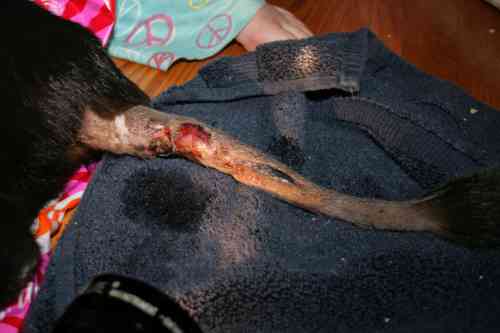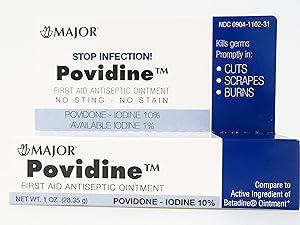The best way to solve pain in your cat’s tail
Pain in the tail of a cat is very common. The cause could be an accident or a fight with another cat. But infections can also cause a cat to have a painful tail. In this article we will tell you more about the possible causes, what other symptoms you may see and what you can do yourself to treat the pain in your cat’s tail.
How do you know if your cat has pain in his tail?
When a cat has pain in his tail, he usually holds his tail lower than the position you are used to from him. He also usually moves his tail less. This is because your cat feels more pain when the muscles and tendons in his tail are tightend to move his position. Does it hurt him? Then he wants to feel as little pain as possible and relaxes his muscles more. That way the muscles don’t pull on his painful tail. The result is that his tail is generally held lower than you are used to from him.
What symptoms do you see if your cat has pain in its tail?
According to a study by Isabella Merola and Daniel S. Mills, there are a number of clear symptoms that can tell your cat has tail pain:
- His tail has a lower position
- He licks his tail more
- You are not allowed to touch its tail
- His tail may feel warmer than you are used to from him
- Aggressive behavior towards you or other animals in the house
- Any swelling of the tail
- Possible injury to the tail
- Sometimes they also go to the litter box less often because of pain when sitting while defecating or urinating
- Less activity during the day
- More meowing
- Hiding
What could be the cause of pain in your cat’s tail?
In very many cases your cat has had an accident. For example, your cat’s tail may have been hit by a door while closing. Or something or someone has pulled his tail hard. In this case too, research done by Emine Catalkaya and others shows that this is usually caused by cars, not only by humans. In addition, fights are also regularly the cause of a painful tail in a cat. But joint wear and tear can also cause pain in older cats. This is called arthritis. And sometimes the pain is because he has an infection in his tail. In most cases, the infection is caused by a fight and is referred to as an abscess on your cat’s tail.
Can a cat bruise its tail?
A bruise means that the soft tissues of, in this case the tail, are damaged. For example, muscles or tendons may have been stretched too much or there may have been a blow or bump to the tail. So yes, a cat can bruise its tail. In the event of a bruise, and therefore damage to the tail tissues, substances are released from the damaged cells that ensure that more blood and nutrients are delivered to your cat’s tail. It will probably be a bit thicker than normal. In addition, the tail may also feel a bit warmer than normal. But all the physical mechanisms that are triggered by a bruise will lead to a painful tail in your cat.
How can you tell the difference between a bruised and broken sore tail?
The difference between a bruised and broken tail is often difficult to see. Both variants cause a painful tail for your cat. With a broken tail you may feel that you can bend the tail in an abnormal way, but this will cause your cat a lot of pain. So do this carefully. Sometimes you also feel a bit of a crackle in the bones of the tail if the tail is broken. In some cases a broken tail is actually in an angular position instead of a straight position. But a straight, painful tail in a cat can also be broken.
Your cat’s painful tail hangs down completely limp
If your cat’s tail hangs down completely limp, it may be that your cat can no longer raise its tail because it cannot control the muscles to do so. In that case, there is damage to the nerve that controls a cat’s tail. But it’s also possible that your cat’s tail is just so painful that he decides to hold it down. You can usually recognize the difference between the two by carefully lifting the tail yourself. Be careful, because this can sometimes hurt your cat a lot and he may bite or scratch.
With a paralyzed tail, i.e. if nerves are damaged, your cat’s tail will fall down as quickly as if you drop an object. However, if your cat can still control its tail, its tail will usually fall down a little less quickly. So he still keeps his muscles slightly tense so that the tail does not simply fall down. Your cat wants to avoid the slap of the tail on the surface your cat is standing on, because that will hurt his painful tail even more. .
How do you treat pain in your cat’s tail yourself?
Look for injuries
First of all, it is important to see if you notice any injuries on your cat’s painful tail. In this case it concerns your cat’s entire body. If you find injuries, you can use those injuries to estimate what happened to your cat. For example, if he has had a collision, his nails are usually worn off. If he has been fighting with another cat, there are often small bite or scratch wounds all over his body.
Measure your cat’s temperature
If an abscess is the cause of a painful tail in your cat, most cats will develop a fever. So carefully measure your cat’s rectal temperature with a human rectal thermometer. His normal body temperature should be below 102,5 degrees Fahrenheit. If it is above this, your cat has a fever and most likely has an abscess in its tail.
Disinfect wounds if there are any
Wounds can easily become infected in cats. That is why it is better to apply betadine ointment to them. This means that the chance of your cat developing a wound infection is much smaller, and the risk of tetanus is also significantly reduced. It will not help your cat with the pain in its tail, but it will ensure less misery in the coming days.
Give your cat a painkiller
Do you still have a painkiller at home that is made for cats? Then give it to your cat to suppress the pain in its tail. In many cases, for example, painkillers were given when a cat was spayed or neutered. Suitable for this are Novacam, Metacam, Rimadyl, Onsior, Carporal, etc. If you do not have this at home, you can also use Aspirin to a limited extent. NB! ONLY ASPIRIN IS SUITABLE, DO NOT GIVE OTHER HUMAN PAIN KILLERS TO YOUR CAT AS THEY ARE DEADLY FOR THEM!
You can give half a tablet of a 81 mg aspirin tablet to your cat once every 2 days (not twice a day!). You can give this to him for a maximum of 7 days. In the meantime, you can also give him CBD oil, which stimulates tissue healing and also has a pain-relieving effect. You can of course give this for longer than 7 days.
Warm compresses
You can also stimulate healing by applying a warm compress to your cat’s sore tail 3-4 times a day. The heat ensures improved blood circulation and a more powerful immune system. This will speed up the healing of your cat’s sore tail.
When should you take your cat to the vet if he has a sore tail?
If your cat has a lot of pain in his tail or his tail is in a crooked position, it is better to go to your vet. It is also better if your cat’s tail drags on the ground. After all, dragging can damage his skin and cause misery afterwards. Especially if the tail has not risen much after 7 days, it is wise to consult your vet. If your cat’s tail remains paralyzed, he can grow old just fine unless the tail drags on the ground. In that case, it is usually advised to have the tip of the tail removed (amputated) so that the tail no longer touches the ground and no more chafing spots can occur.
However, is his tail in a straight position, but does it appear broken? As long as your cat does not have excessive pain in his tail, it is not necessary to go to your vet. A fracture that is otherwise in a straight position will heal on its own and does not require treatment. Sometimes support bandages are put around the tail, but in practice this usually causes more misery due to pinching of the tail and abrasions caused by the bandage, so we no longer do it. A painkiller is generally the only thing that is done for a broken tail. Even taking an x-ray is not necessary as it will not contribute to other treatment for your cat’s painful tail.
Also if your cat has a fever, it is wise to visit your vet. There has probably started an infection in the tail (usually an abscess) that requires a course of antibiotics and sometimes even surgical opening of the abscess.








